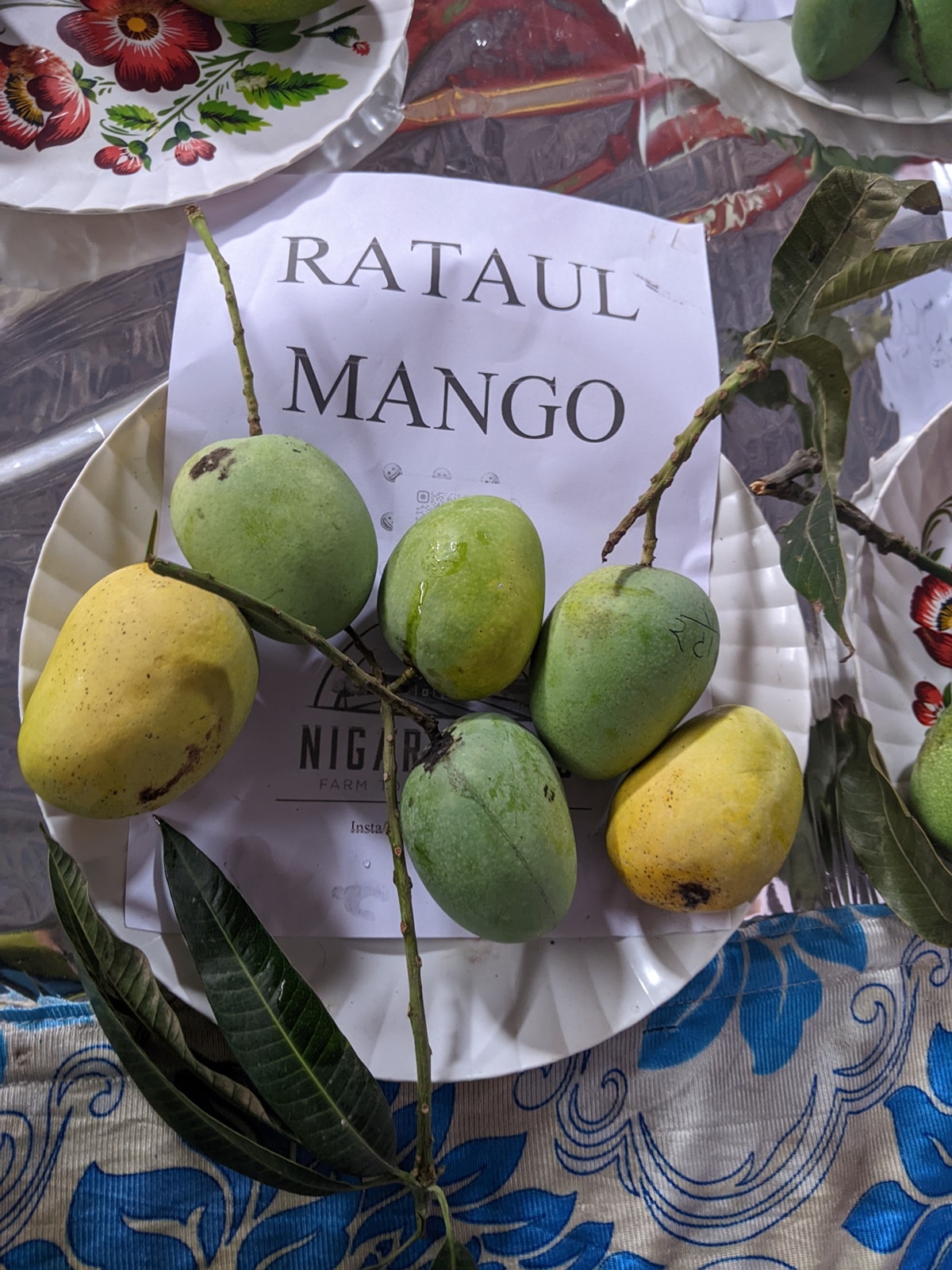On a sticky, musty Sunday morning earlier this month, about 80 people from various walks of life took a bus from Delhi to Baghpat. While many had not heard of the Western UP town, fewer knew anything about the village that was going to be their destination for the day – Rataul. The occasion was special; after a two-year Covid-induced gap, Sohail Hashmi was back with his mango trail.
Buy Now | Our best subscription plan now has a special price
The idea of starting the trip struck Hashmia writer-filmmaker and popular heritage walk leader, around 2014 when he was on his annual visit to Rataul to spend a day at the orchard of his “guru” and history professor and eminent academic Zahoor Siddiqui, who had settled back in his village after retirement from Delhi University to start a girls’ school, and also to grow mangoes. Siddiqui passed away in 2019. “I realised that people in Delhi had access to a very few variety of mangoes: Hardly four or five – Dussehri, Langda, Chausa and Bainganpalli (which is passed off to them as Safeda, which it is not). But there is much more to mangoes and I wanted them to enjoy those and relish them the way they should be relished. And thus I came up with the idea of this mango trail,” says Hashmi.
As the bus made its way through a dirt track into Rataul village, the first stop for its occupants was a farmhouse all decked up to welcome them (Photo: Deepika Singh)
As the bus made its way through a dirt track into Rataul village, the first stop for its occupants was a farmhouse all decked up to welcome them. Inside the hall, mangoes of different varieties were laid out on a table with their names, many of them peculiar sounding: The pock-marked Chitla mangoKachariya mango, Makhsoos, Tota Pari among the other common varieties. But the piece de resistance was the variety that was named after the village. Relatively small and round, the Rataul was not much to look at but smelled heavenly as was evident with the sight of mango lovers vying with each other to catch hold of a piece, take a whiff and let out a sigh.
Once that was done, the mango connoisseurs headed to the steel drums filled with mangoes soaked in water – the traditional way of enjoying the fruit – and grabbed as many as they could. Some reached out for knives to slice the fruit open and marvel at the golden yellow pulp, while others proceeded to relish it the age-old way – softening the mango with their palms and then sucking out the contents like a popsicle.
“You are not supposed to eat mangoes on an empty stomach! These are for after lunch. Now don’t blame me if you all are down with acidity later on,” thundered Hashmi as he made his way to the scene of crime to assess the damage. The evidence of their deed slathered across their faces, the mango lovers gently wiped their mouths, grinned sheepishly at each other and headed towards the next destination — a sprawling mango orchard. For a majority of the visitors, it was their first visit to a mango orchard, which was “very different from an apple orchard”, as Hashmi pointed out.
The group, comprising lawyers, journalists, teachers, entrepreneurs, students and a delegation of Austrian-German tourists, had a field day as they inspected the variety of mango trees as well as those of jamun — another monsoon offering.

Their curiosity satiated and their appetite whetted, the group headed back to the farmhouse for lunch. The spread was a special one – comprising seasonal specialties such as besan roti (flat bread made of chick pea flour), lehsun (garlic) chutney, dry chilli pickle and seetaphal (pumpkin) curry apart from chhole (chickpea curry) and aloo sabji (potato curry) and chicken biryani for non-vegetarians. A tall glass of chhaas (spiced buttermilk) worked as a perfect palette cleanser and it was time to dig in. With nothing coming in their way, the visitors belted one mango after the other, gushing at how they were finally getting to enjoy the “aslee cheez” (the real deal) after the ”substandard” Delhi fare they have been eating all along. The event also worked as an ice-breaker as strangers became friends and bonded over their love for the “king of the fruits”.
Boxes of Rataul mangoes in arm, the group headed out. Some headed to Salma Public School – the girls school set up inside a sprawling haveli by Siddiqui. Every year, a part of proceeds from the trip is earmarked for the school.
📣 For more lifestyle news, follow us on Instagram | Twitter | Facebook and don’t miss out on the latest updates!